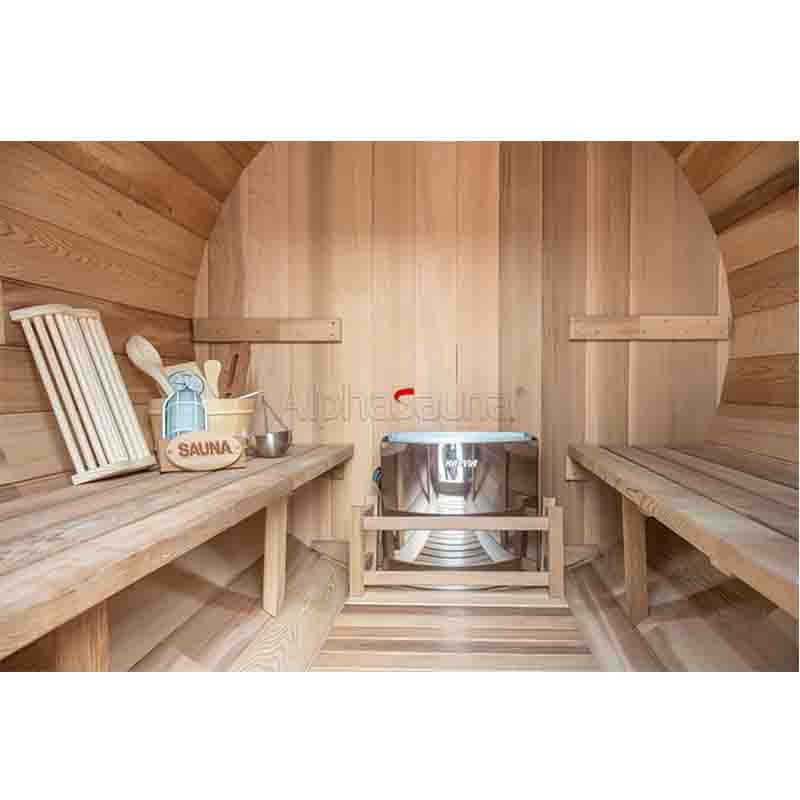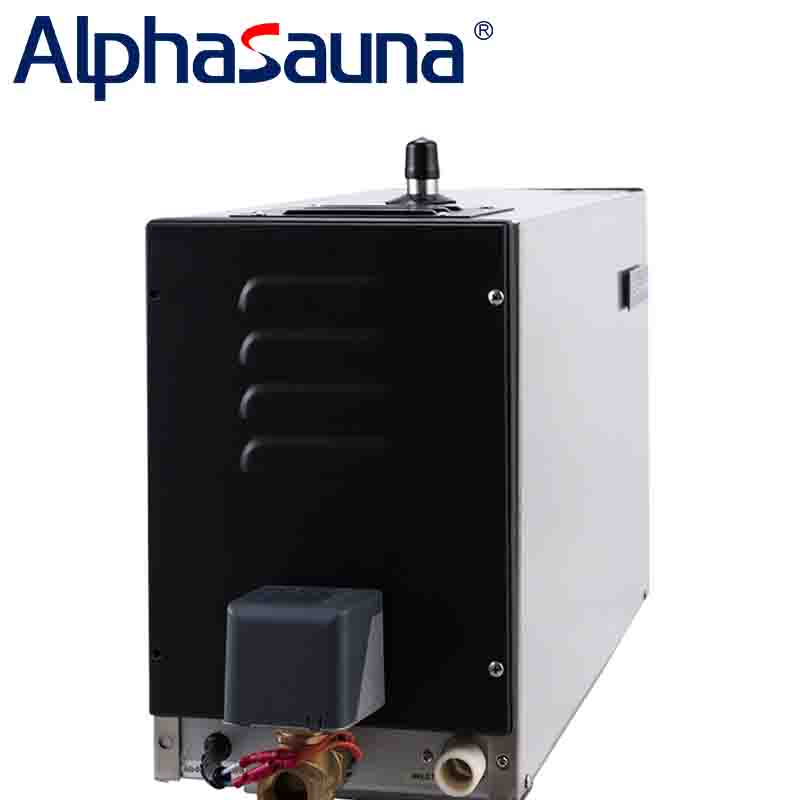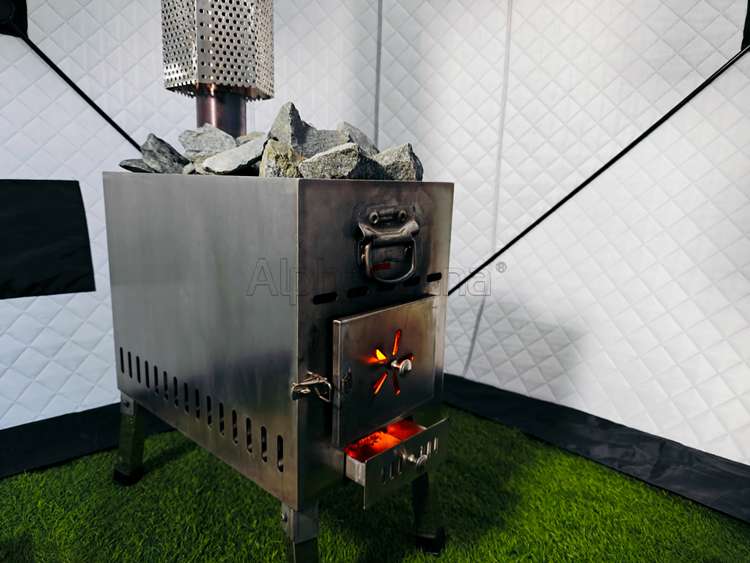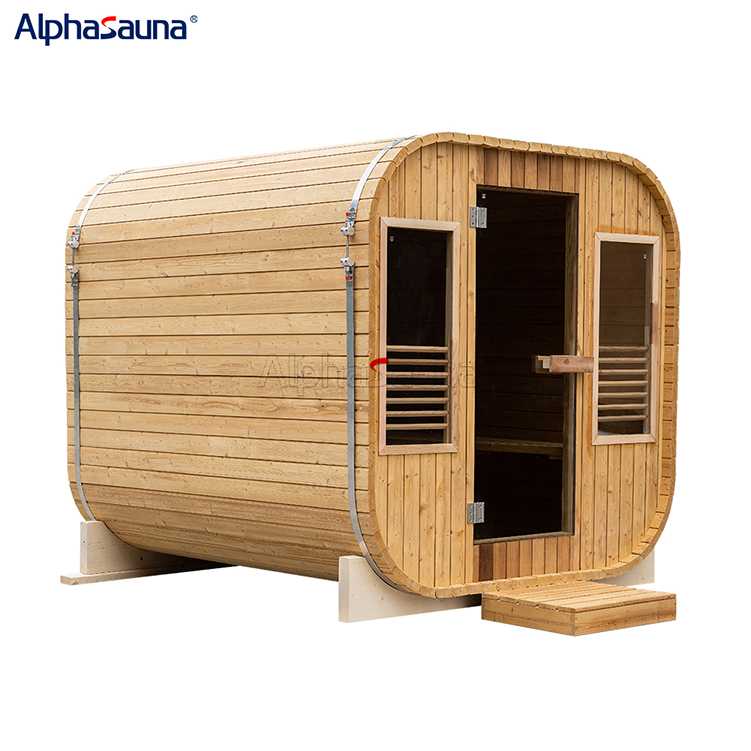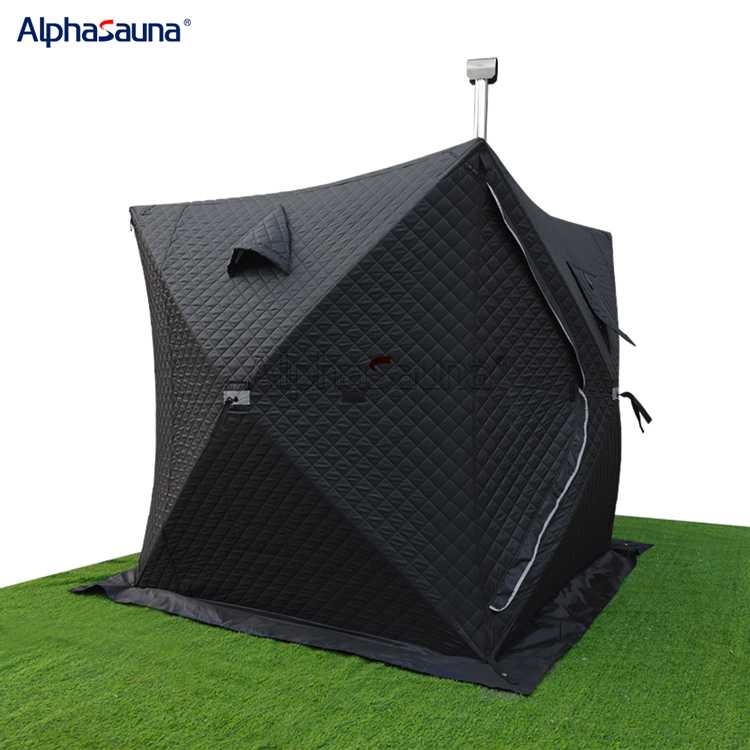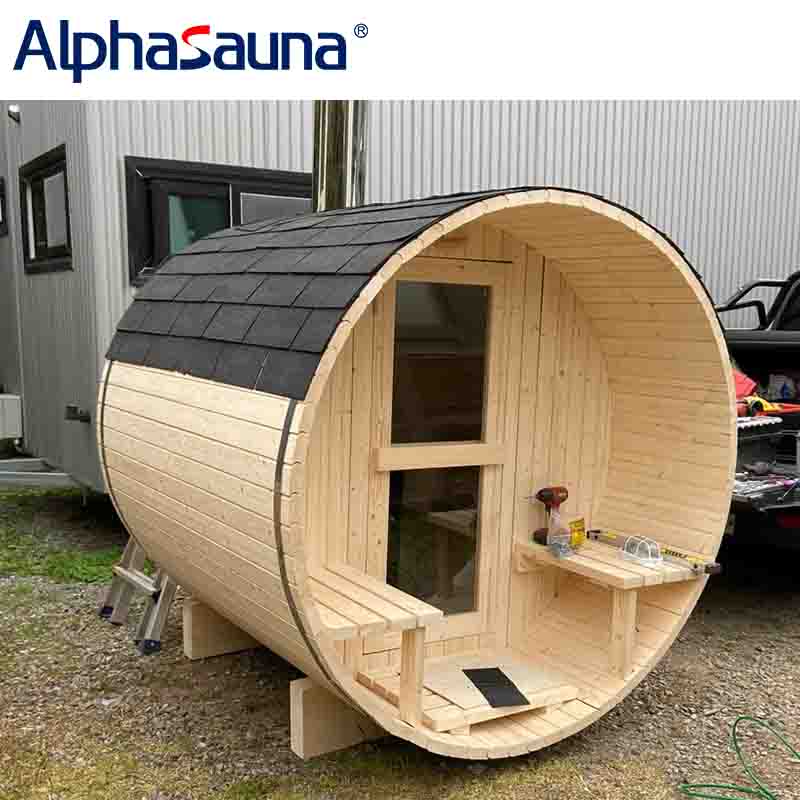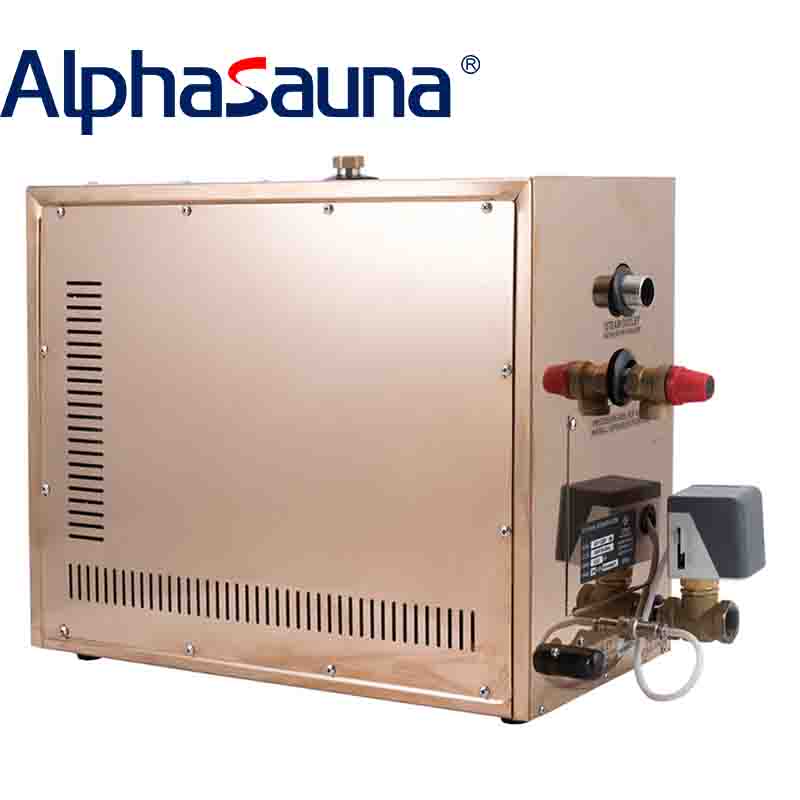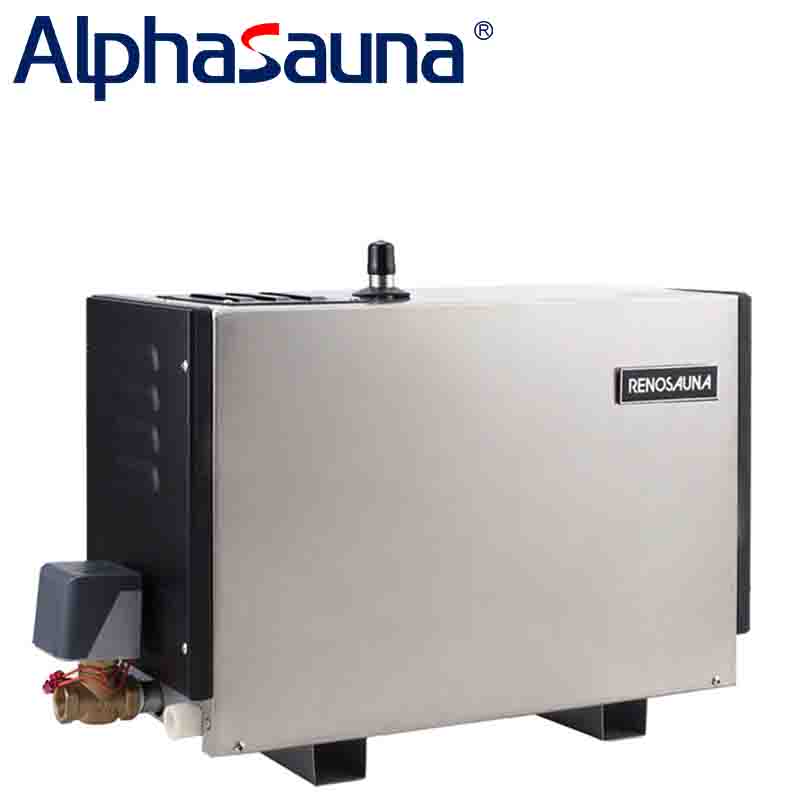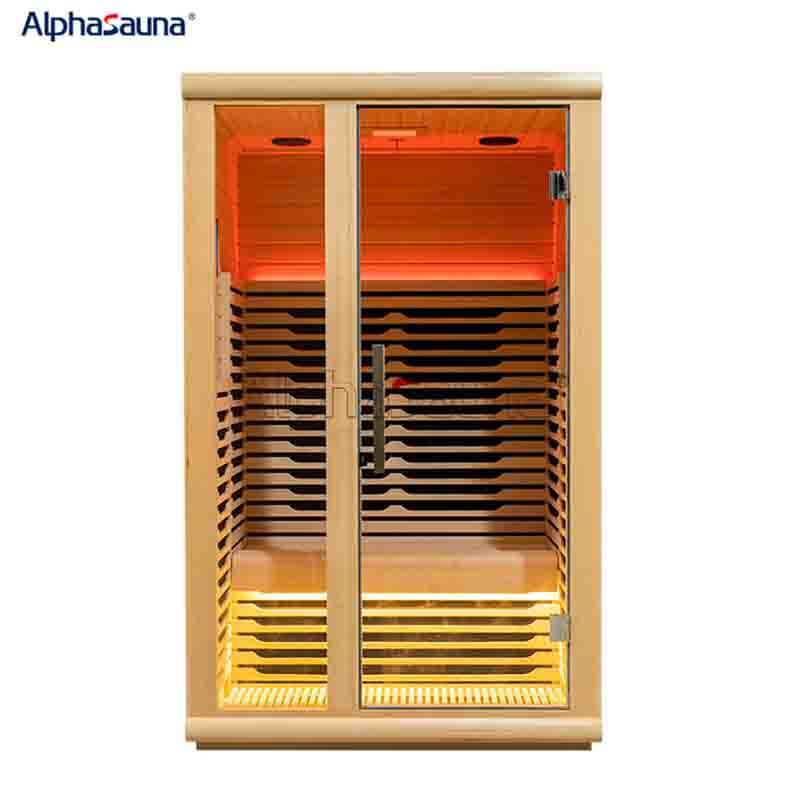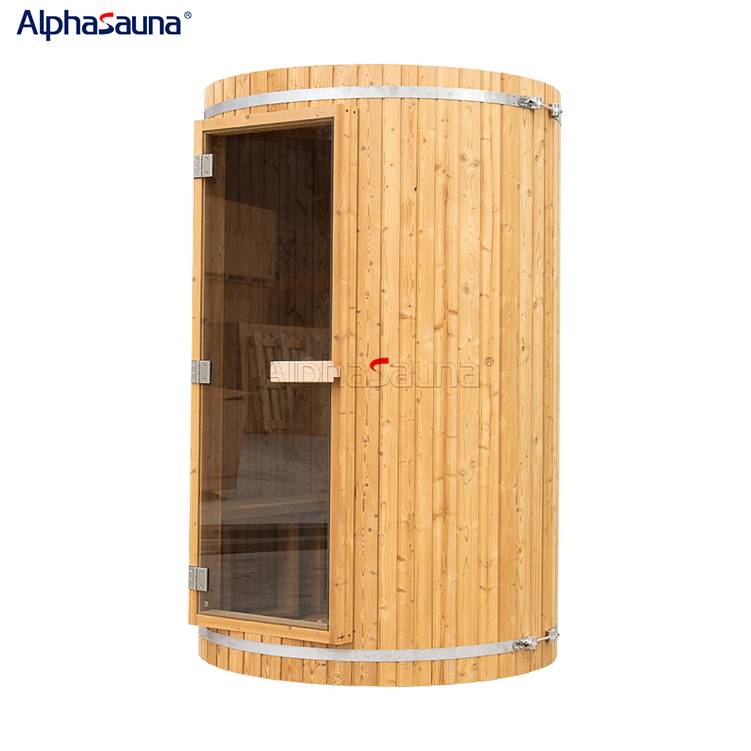ALPHA SAUNA & SWIMMING POOL SUPPLIER CO.,LTD
Which is better, dry sauna or wet sauna?
Which is better, dry sauna or wet sauna?
Sauna can be divided into dry sauna and wet sauna. The sauna environment of the two is different in temperature and humidity,
and their effects are also different.
What is dry sauna?
Dry sauna is usually conducted in a closed space, generating heat by heating the air without the production of steam, thus resulting in a high-temperature
and dry environment inside the sauna room. In the sauna room, people tend to sweat a lot, aiding in the expulsion of toxins from the body, which is beneficial to health.
What is wet sauna?
Wet sauna shares many similarities with dry sauna, but the temperature in wet sauna is relatively higher. Unlike dry sauna, people add water to the sauna stove in
wet sauna, producing steam to increase the humidity in the air. Adding moisture to the air appropriately makes people feel more comfortable, benefiting both the
skin and respiratory system. Wet sauna promotes blood circulation, toxin elimination, and serves as a therapeutic method for relaxation of both body and mind,
similar to dry sauna.
The difference between dry sauna and wet sauna
The main difference between dry sauna and wet sauna lies in temperature and humidity. Dry saunas typically lack steam and moisture, resulting in lower temperature
and humidity levels in the air. Wet saunas, on the other hand, involve adding water to the sauna stove to generate steam, thus increasing the humidity in the air. They
also differ in their working principles; while dry saunas primarily produce heat by heating the sauna stove, wet saunas also utilize water added to the stove to generate
steam, thereby raising the humidity in the air. Dry saunas tend to have a relatively dry environment, making it easier for the body to feel the heat and resulting in increased
sweating. Wet saunas, with higher humidity, offer a more comfortable experience, especially for those sensitive to dry environments. Wet saunas can help open pores,
promote deep skin cleansing, and ensure clear breathing. Both are therapeutic saunas, promoting blood circulation, skin cleansing, fatigue relief, stress reduction,
and relaxation. Saunas are not only a relaxing health activity but also a social one, allowing people to enjoy the comfort and fun of saunas with family and friends.
What are the types of saunas that are dry saunas?
1. Traditional Sauna: Traditional saunas are typically constructed from wooden materials and equipped with electric heaters, sauna stoves, or wood-fired stoves for heating.
2. Barrel Sauna: Barrel saunas are built in a barrel-like shape using wood and are commonly used outdoors. They are easily movable and offer good insulation properties.
3. Portable Sauna: Portable saunas are usually composed of a collapsible frame and heater combination, allowing for easy assembly and disassembly. They are convenient for indoor and outdoor use.
These are some common types of dry saunas, each with its own features and effects. Depending on individual preferences and needs, one can choose the most suitable sauna to ensure the maximum enjoyment of the sauna experience.
What types of saunas are there in wet saunas?
1. Steam room: A steam room typically features a steam generator, which produces ample steam by heating water. Steam rooms are usually more sealed compared to
traditional dry saunas to ensure minimal loss of moisture. They are designed to create a high-temperature, high-humidity environment, making them ideal for wet sauna therapy.
2. Hot spring bath: Hot spring baths are often combined with steam rooms and usually include hot tubs or hot springs pools, allowing users to enjoy the therapeutic
experience of both steam and hot springs simultaneously.
3. Integrated sauna room: This type of sauna room is typically designed to accommodate both dry sauna and wet sauna experiences. It often includes a temperature
and humidity control system, offering flexibility to adjust the temperature and humidity according to user preferences. This versatility caters to the diverse needs of different users.
Both types of sauna rooms vary in design, functionality, and facilities, all aimed at providing an enhanced sauna experience to promote relaxation, stress relief, fatigue reduction,
improved blood circulation, and alleviation of muscle pain.
Features of indoor one-person sauna room
An indoor single-person sauna room is designed for the use of one person, and here are its characteristics:
1. Space Design: The space of an indoor single-person sauna room is relatively small but sufficient for one person to sit or lie down. This design is advantageous for
saving space costs while still providing a comfortable sauna experience.
2. Portable: Indoor single-person sauna rooms are generally easy to move and often feature a foldable design.
3. Easy Installation: Installation of indoor single-person sauna rooms is typically straightforward and does not require professional assistance. Users can install them
successfully following the instructions provided.
4. Comfortable Experience: Despite its small size, an indoor single-person sauna room typically has enough space for seating and a heater, providing a comfortable
sauna environment and experience.
5. Private Space: Indoor single-person sauna rooms offer a highly private space where users can enjoy the sauna experience alone at home without the need for
sharing or interaction with others. They are suitable for individuals who prefer solitude.
In summary, indoor single-person sauna rooms offer the benefits of convenience and easy installation while occupying relatively small spaces. They are suitable for
those with limited space who still desire a comfortable sauna experience. These rooms provide a comfortable and private sauna experience and can be customized
and chosen according to individual needs, budgets, and preferences. Some sauna rooms, such as those from Alpha Sauna, offer customization services to help you
purchase the sauna room that best suits your needs.
sauna shower combo
The sauna shower combination offers a blend of sauna and shower effects, providing users with a more comfortable experience. Here are the characteristics of the
sauna shower combination:
1. Sauna Functionality: The sauna shower combination typically features heaters and steam generators to provide high temperatures and humidity, allowing users
to enjoy the sauna experience fully.
2. Shower Functionality: In addition to the sauna function, it includes shower facilities such as showerheads, faucets, and faucet controllers. Users can adjust water
temperature and flow according to their preferences, enhancing the sauna experience.
3. Design: The sauna shower combination is an integrated system with unique design and comprehensive functionality, emphasizing the sauna effect. It can be
standalone or installed in bathrooms or fitness rooms.
4. Space Saving: Combining sauna and shower functions into one facility saves space while allowing users to enjoy both experiences simultaneously.
5. Convenience: The sauna shower combination offers a comfortable sauna experience and convenient shower functionality, allowing users to enjoy both experiences
simultaneously in one place, saving time and costs.
The sauna shower combination combines sauna and shower functions, providing users with a multifunctional bathroom facility for a comfortable and convenient experience,
improving efficiency and cost-effectiveness. If you want to enjoy both sauna and shower experiences simultaneously, consider purchasing a sauna shower combination facility
to meet your needs.
Alphasauna's Indoor Sauna
Alphasauna produces and sells various types of sauna rooms, offering users more choices. Our sauna rooms are of guaranteed quality, unique design styles, and advanced
technology, all aimed at providing you with a more comfortable and unique sauna experience.

